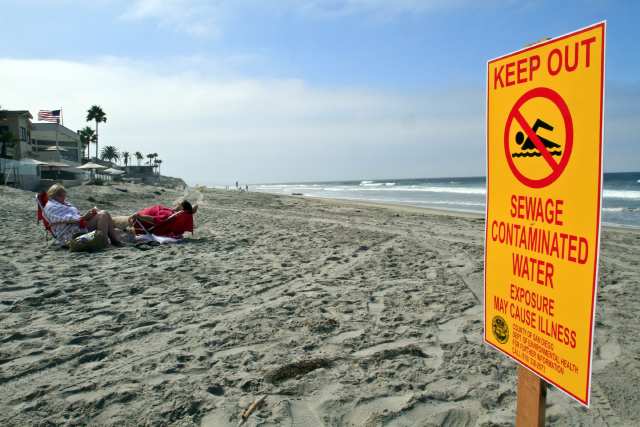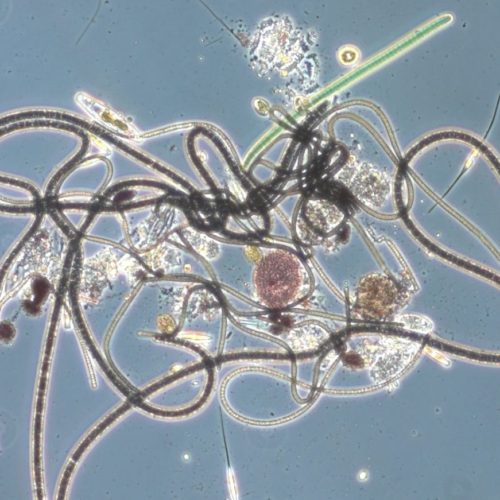California Weakens Beach Water-Quality Protections

New rules permit 1 out of 31 people to get sick from swimming at CA beaches
A day at the beach shouldn’t make anyone sick. So it’s a bit perplexing to Heal the Bay that the state of California has just decided to weaken water-quality protections for the millions of people who visit our shoreline each year.
Last week the State Water Resources Control Board approved new standards for bacteria levels in our coastal and inland waters. Unfortunately, the board has now decided that it’s acceptable that one person out of every 31 beachgoers become ill with diarrhea, intestinal ailments or skin rashes after a visit to the shore.
Think about that for a minute … if a typically-sized elementary school class goes on a field trip to the beach, it’s now OK for one of those children to later become sick from water contact.
But this isn’t just a theoretical debate. Tens of thousands of people get sick each year swimming at Southern California beaches. Ocean-borne illnesses cause at least $20 million in health-related costs each year, according to L.A. County health officials.
We’re concerned because these new levels of “allowable” illness undermine public health protection and benefit polluters and dischargers. The new rules basically endorse bacteria pollution levels set by the U.S. EPA, which had watered-down its own regulations in 2012 to Heal the Bay’s dismay.
California is known for setting stricter environmental standards than federal regulators. Instead of using the EPA as the gold standard for the Golden State, Heal the Bay believes that all standards and acceptable risk levels should be based on research performed along California’s unique coastline and watersheds.
Staff scientists Ryan Searcy and Karen Vu traveled to Sacramento to press this issue with the State Board, which is a branch of the California EPA. The regulatory body oversees the state’s water quality, drinking water, and water rights programs.
The State Board also oversees Regional Boards, which develop water quality standards and enforces those standards when they are violated, all serving to protect the beneficial uses of the state’s waterways.
During our meetings we also expressed our concern about a provision to create a new inland regulatory designation that could have a major impact on efforts to increase recreation along the L.A. River.
The board has decided to create a new statewide beneficial-use designation for inland waterbodies, to be called Limited REC-1 (LREC-1). The move may actually lead to efforts to restrict public access to spots along the L.A. River and other urban waterways.

Waterbodies in California that have recreational uses in or near the water are currently labeled either REC-1 or REC-2, depending on whether direct contact with and ingestion of the water will occur. Depending on the designation, there are different water quality requirements for polluters that are discharging into the waterbodies. The idea is to compel them to ensure that the beneficial use of the waterbody is maintained.
Under this new provision, a LREC-1 designation refers to waterbodies that are “limited by physical conditions such as very shallow water depth and restricted access and, as a result, ingestion of water is incidental and infrequent.”
Because an LREC-1 designation has less stringent water quality standards than a REC-1, an incentive is created for polluters to restrict public access to a waterbody to achieve a less protective designation.
This type of waterbody designation will have large implications for urban stream restoration efforts, such as those in the L.A. River, where a massive effort is under way to improve and increase public access.
However, we did manage to score a few wins in our trip to Sacramento.
Heal the Bay staff scientists worked with several other NGOs during the past few months and successfully stopped the State from dropping fecal coliform standards in determining ocean water-quality regulations.
The state had initially neglected California-based science that proves that fecal coliform remains a critical indicator of health risk at our beaches.

Fecal coliform is one of three fecal indicator bacteria that are monitored by beach agencies and regulated by the State. These indicator bacteria aren’t necessarily harmful to humans themselves, but each of the three are potentially indicative of the presence of pathogens in the water. They are easier and cheaper to measure than directly measuring for the bugs that harm us.
In California, fecal coliform has been an important indicator of the risk of illness, along with enterococci and total coliform. Thankfully, regulators agreed to go back and consider this science, and the original fecal coliform standards will remain.
Additionally, the state has also agreed to continue to consider the latest California-specific epidemiological studies to develop and improve appropriate bacteria objectives during future reviews of ocean-bacteria standards.
Some might wonder why the state is acting now to modify long-standing beach water-quality rules.
The board has cited a need to modernize its water quality standards. The last modification occurred in the late 1990s, with the passing of AB411 (which Heal the Bay helped enact).
AB411 mandated weekly monitoring of hundreds of California beaches, and requires beach agencies to post notices if the allowable thresholds are exceeded. Since then, the EPA adopted new standards in 2012, and a number of relevant epidemiological studies were published in California. The state made these changes in its standards mostly to align with the EPA, but neglected to consider the relevant epidemiological studies.
You can help us by paying attention to water quality at your favorite beaches and streams. Fortunately, Heal the Bay has developed some tools for the public to use to do this easily. Using the Beach Report Card, the NowCast system, and the River Report Card as advocacy tools.
All water-lovers can monitor their favorite swimming spots and raise their voices if they see consistently poor water quality.
You win some and you lose some whenever you travel to Sacramento’s halls of power, as any seasoned policy advocate will tell you.
While we are discouraged by the state’s decision to go lock-step with federal bacteria standards, we promise to keep fighting. We will continue to support policies that provide the maximum public health protection.



